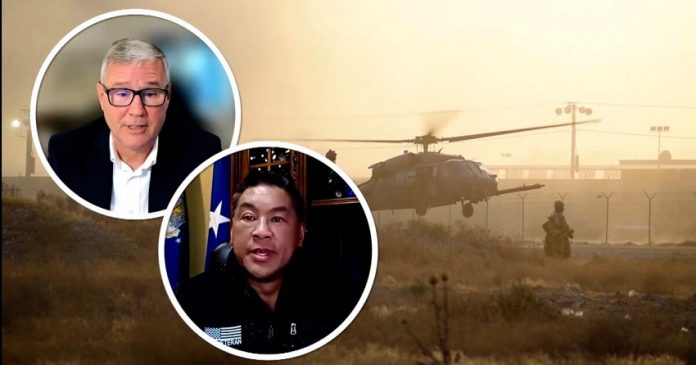COLORADO SPRINGS, CO — Two retired high-ranking military officers have expressed mixed reactions to the Pentagon’s recent directive to reduce senior military leadership by 20%. Defense Secretary Pete Hegseth issued a memo on Monday ordering cuts to the number of four-star generals, flag officers, and general officers, citing the need to streamline and optimize the leadership structure to address budgetary pressures.
According to the memo, the Department of Defense will reduce the number of four-star generals and admirals by at least 20%, cut National Guard general officers by at least 20%, and reduce the overall number of general and flag officers by at least 10%. Hegseth’s decision follows growing concerns over military budget constraints and the need for increased efficiency within the Pentagon.
A Familiar Move
Rear Admiral Hank Bond (US Navy, Ret.), who served in the military for decades, acknowledged that cuts to senior ranks are not a new phenomenon. “Over the years, there’s always a check on the growth of senior officers, especially in relation to the general force of junior personnel,” said Admiral Bond. “This is not unusual in my thinking. When budgets are under stress, it’s common to make adjustments and reduce the number of senior leaders.”
Bond added that the primary concern with reducing four-star generals, however, is the potential risk it could pose. “There’s always a risk when cuts are made at senior levels, particularly within Combatant Commands and major Component Commands. Those positions are critical for military operations,” he noted. Despite this, Bond stressed that such decisions are part of the broader risk management process that occurs in any large organization.
Impact on Military Readiness and Morale
Brigadier General Cary Chun (US Air Force, Ret.) raised concerns about the potential consequences of these cuts on military readiness and morale. Chun, who has a deep understanding of military operations, warned that reducing leadership ranks could lead to disruptions in how the services are organized, potentially undermining the effectiveness of the military’s leadership structure.
“To cut this amount from the senior ranks will impact military readiness. These cuts will force the services to reorganize, and that can have a significant impact on their ability to function efficiently,” said General Chun.
In addition to concerns over readiness, General Chun pointed out that limiting the number of senior leadership positions could negatively affect the morale of younger officers. “If fewer positions are available for young officers to aspire to, it might discourage them from striving for leadership roles,” he said. Currently, there are about 800 general officers across the U.S. military, including 44 four-star officers, a figure that could be significantly reduced as part of the cuts.
Adapting to Change
Despite concerns over the impact of these cuts, both Admiral Bond and General Chun expressed confidence that the military will adapt to the changes. “Even with these significant cuts, the U.S. military remains the greatest fighting force in the world,” General Chun emphasized. “The military services and joint war-fighting commands will adjust, and they will still be able to complete their missions and defend our nation effectively.”
Secretary Hegseth has previously stated, both during his confirmation hearing and in public remarks, that the U.S. military has too many senior generals, a view that has shaped his decision to restructure the leadership ranks. Hegseth also made headlines in February when he ordered the firing of General Charles Quinton Brown Jr., the Chair of the Joint Chiefs of Staff for the U.S. Air Force.
While the reduction of senior leadership ranks may be a tough pill to swallow for some, it is clear that these decisions are being driven by the ongoing need for fiscal responsibility and operational efficiency in an increasingly complex global environment. How the military adapts to this new directive will likely shape the future of military leadership for years to come.



